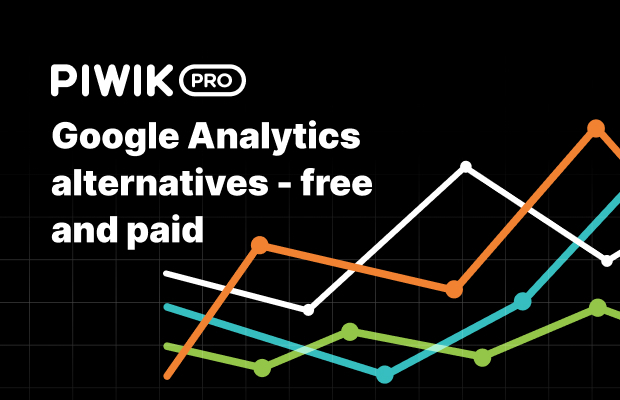Maximize Your Site Efficiency With Google Analytics Tracking Code
In the electronic landscape, comprehending customer interactions with your internet site is vital for optimization. By integrating the Google Analytics tracking code, you can open a wealth of info regarding visitor actions, enabling you to keep an eye on important metrics and recognize potential areas for improvement. This strategic application not just informs your choices yet also leads the means for a more appealing customer experience. However, the genuine obstacle lies in successfully analyzing this data and equating understandings into actionable methods. What actions can you require to ensure you are totally leveraging these understandings for optimal performance?
Understanding Google Analytics
Understanding Google Analytics is vital for web site proprietors and marketers aiming to optimize their online presence. This effective device offers critical insights into customer behavior, allowing stakeholders to make data-driven decisions. By tracking various metrics, such as page views, bounce rates, and individual demographics, Google Analytics assists identify which aspects of a website are carrying out well and which require improvement.
One of the essential features of Google Analytics is its capacity to section data. Customers can examine traffic resources, individual engagement, and conversion prices across different sectors, such as geographic locations or gadget types. This granularity makes it possible for marketing professionals to tailor their approaches to certain audiences, therefore improving the effectiveness of their projects.

Setting Up Monitoring Code
To harness the complete potential of Google Analytics, setting up the monitoring code properly is a basic step. The monitoring code, a fragment of JavaScript, allows Google Analytics to gather information about user communications on your internet site. To start, log in to your Google Analytics account and navigate to the Admin area. Under the Property column, pick "Monitoring Info" and then "Monitoring Code." Below, you will locate your special monitoring ID, which starts with "UA-" complied with by a series of numbers.
Following, you'll need to install this code into the HTML of your internet site. Ideally, position the monitoring code prior to the closing tag on every page you desire to monitor. If you're utilizing a material management system (CMS) like WordPress, consider making use of plugins that help with easy combination.
After carrying out the code, it's critical to confirm its functionality. Make use of the "Real-Time" reports in Google Analytics to validate that information is being accumulated as anticipated. By ensuring correct arrangement, you create a solid foundation for effective information evaluation and strategic decision-making to enhance your site's performance.
Key Metrics to Display
Routinely keeping an eye on crucial metrics in Google Analytics is crucial for analyzing your site's efficiency and individual interaction. Among the fundamental metrics to track are page sights, which supply insight into how often users go to different pages on your website. In addition, distinct site visitors help you understand the reach of your web content by showing the number of distinctive customers are engaging with your site over an offered duration.
Bounce price is an additional vital metric, revealing the percent of site visitors who leave your site after watching only one page. A high bounce rate might indicate issues with material relevance or customer experience. Alternatively, session duration shows how much time site visitors remain on your site, helping you assess content effectiveness and customer rate of interest.
Conversion rates are crucial for measuring the success of your website in achieving certain goals, such as kind submissions or item purchases (when does the google analytics tracking code send an event hit to analytics?). Keeping track of website traffic sources is additionally essential, as it aids recognize which channels drive one of the most traffic and conversions, allowing for even more redirected here targeted marketing strategies
Studying Visitor Habits

Furthermore, tracking user paths through the site aids expose typical navigating patterns. This information is essential in establishing whether customers can easily discover the content they look for or if they encounter obstacles that cause disappointment. Identifying high departure web pages can highlight locations that might need redesign or even more engaging web content to retain site visitors.
Furthermore, segmenting users based on demographics, passions, and behavior supplies a deeper understanding of the target market. This segmentation allows businesses to tailor web content and advertising methods better, raising the likelihood of conversions. Eventually, assessing visitor habits not just informs site enhancements yet likewise promotes a much more user-centric strategy, leading to enhanced fulfillment and commitment with time.
Executing Data-Driven Modifications
Carrying out data-driven adjustments is necessary for boosting website performance and achieving company goals. By leveraging understandings collected from Google Analytics, companies can determine locations for improvement and make educated choices to enhance individual experience.
First, assess key performance signs (KPIs) such as bounce rates, session duration, and conversion rates to pinpoint specific problems impacting user engagement - when does the google analytics tracking code send an event hit to analytics?. For example, a high bounce rate on a landing page may indicate that the content is not reverberating with site visitors or that the web page takes too long to load

Verdict
In conclusion, the application of Google Analytics tracking code is essential for enhancing site efficiency. By properly keeping track of user actions and essential metrics, useful insights can be gotten, helping with data-driven decision-making - when does the google analytics tracking code send an event hit to analytics?. This procedure not just boosts customer experience yet also aligns with more comprehensive business objectives. Constant analysis and subsequent modifications based upon accumulated information will certainly lead to sustained improvements, ultimately adding to the overall effectiveness and success of the internet site.
By tracking various metrics, such as web page sights, bounce rates, and individual demographics, Google Analytics helps identify which facets of an internet site are carrying out well and which need enhancement.
Users can analyze website traffic resources, user interaction, and conversion rates throughout various sections, such as geographic places or tool types. The tracking code, a snippet of JavaScript, makes it possible for Google Analytics to gather data concerning individual interactions on your internet site.Regularly checking crucial metrics in Google Analytics is vital for assessing your internet site's performance and customer interaction. By leveraging Google Analytics, website proprietors can acquire beneficial insights right into exactly how customers communicate with their website.